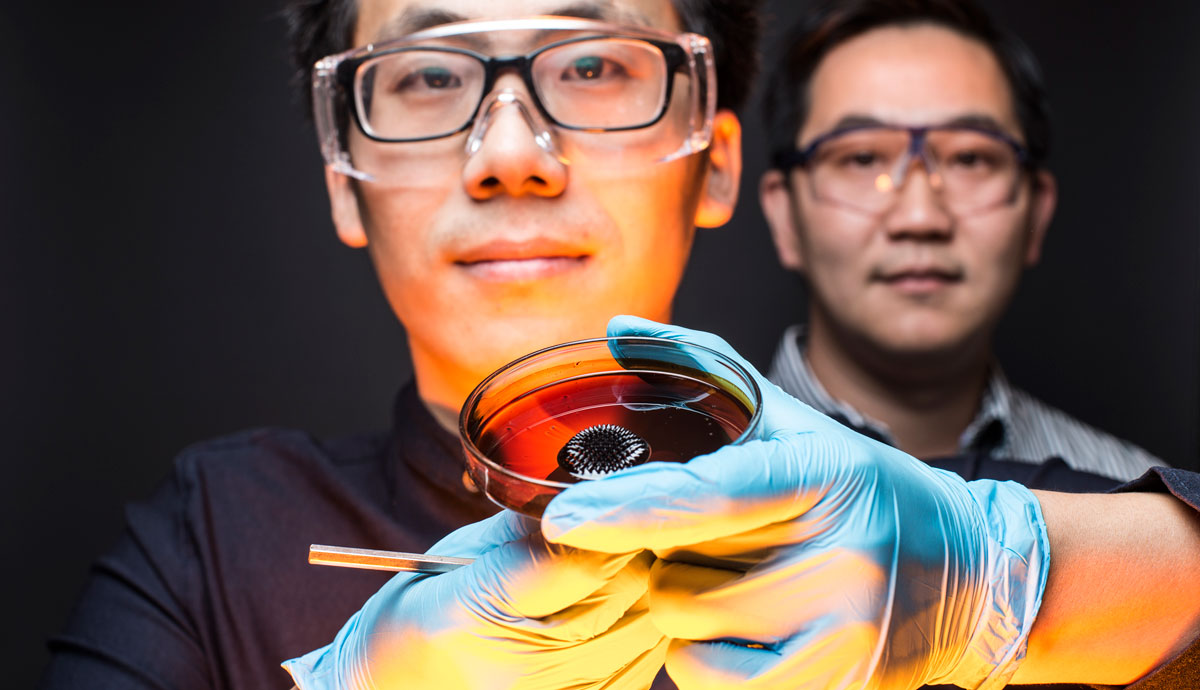June 17, 2016
Animal attraction: how fish scales and magnetism could help mop up oil spills
Discovering what makes oil bond to some surfaces and not others could be the key to environmental clean ups.
Researchers at UOW’s Institute for Superconducting and Electronic Materials (ISEM) with their partners at Beihang University in China have demonstrated two novel methods of controlling the movement of droplets of oil within other liquids using magnetic forces.
The research is inspired in part by the oil-repellent nature of fish scales as a way of reducing the oil’s adhesion, or stickiness, to any surface it touches.
The two techniques – one using tiny particles dispersed through the oil and the other using an oil-repellent film – have major implications for environmental protection, as well as protective coatings for drug delivery.
In recent years, researchers have attempted to reduce the stickiness by manipulating the liquid’s surface tension and using external forces such as electricity, pressure differences, heat and even sound waves to move the oil droplets.
ISEM research fellow Dr Yi Du said the challenges of controlling the speed and direction of the droplet remain.
Particles scattered on water
The joint-research teams developed tiny (nanoscale) magnetic particles that are dispersed into oil or water. Once they bond with the oil, it creates a magnetic liquid that can be pushed or driven using a relatively simple magnet.
The concept could be likened to using a magnetic leaf blower, and has the potential to drastically reduce the cost and time spent cleaning up major oil spills.
In cases where the oil leak is underwater, or where the oil is often heavier than water, the particles sink through the water until they bond with the oil, overcoming a major problem for environmental clean up.
The same concept could be applied to spills on land, where the particles are diffused in water instead of oil and could be ready to use in spill clean up kits.
The nanoparticles are non-toxic and re-usable, as well as being cheap and easy to produce.
The ratio of the particles to oil is as little as 100 milligrams per litre and can be adjusted to improve the response to the magnetic field.
“If you think of a lubricant that many people have in their garage, such WD40, we know that it sticks very well to surfaces it’s sprayed on because it has very good bonding chemistry,” Dr Du said.
“Understanding that bonding chemistry is what is helping us ensure that particles stick to the oil droplets so they can be driven and or pushed using a magnet.
“The environmental application for this work is very important. Millions, sometimes billions of dollars are spent trying to clean up and collect oil from major spills.”
The results were published recently in the American Chemical Society journal, ACSNano.
Oil-repellent film
Dr Du said it was extremely difficult to manipulate and move oil droplets in a liquid medium, such as water, without loss because of its tendency to stick to certain surfaces.
Tested over 10 cycles, their ‘smart film’ did not lose any oil, while the comparison smooth surface film lost 40 per cent of the oil droplet volume through sticking to the surface.
“We know that fish scales can be self-cleaning because of their oil-repellent nature underwater, so we made a surface that mimics the fish scales by placing nanoscale rods on a film,” he said.
“In between the nanorods are an uncountable number of holes or wells in the surface, which are filled with water when they are immersed.
This creates a repellent force because only the top surfaces of these nanorods are in contact with the oil droplet.
“If we magnetise the fluid using the particles, the oil-like fluid can be transported through very small liquid-filled networks, such as blood vessels or piping, where a traditional electric pump is not feasible.”
The next step is to fabricate and test the film with the magnetic fluid and oil on a large scale.
“The potential applications, such as underwater crude oil collection and protective coatings, make this breakthrough work very appealing to address some industrial challenges.”
The results were published recently in the Royal Society of Chemistry journal Physical Chemistry Chemical Physics.
Both research projects have been delivered through the UOW-BUAA Joint Research Centre, which has led to 12 joint research publications since its formation in 2015.
